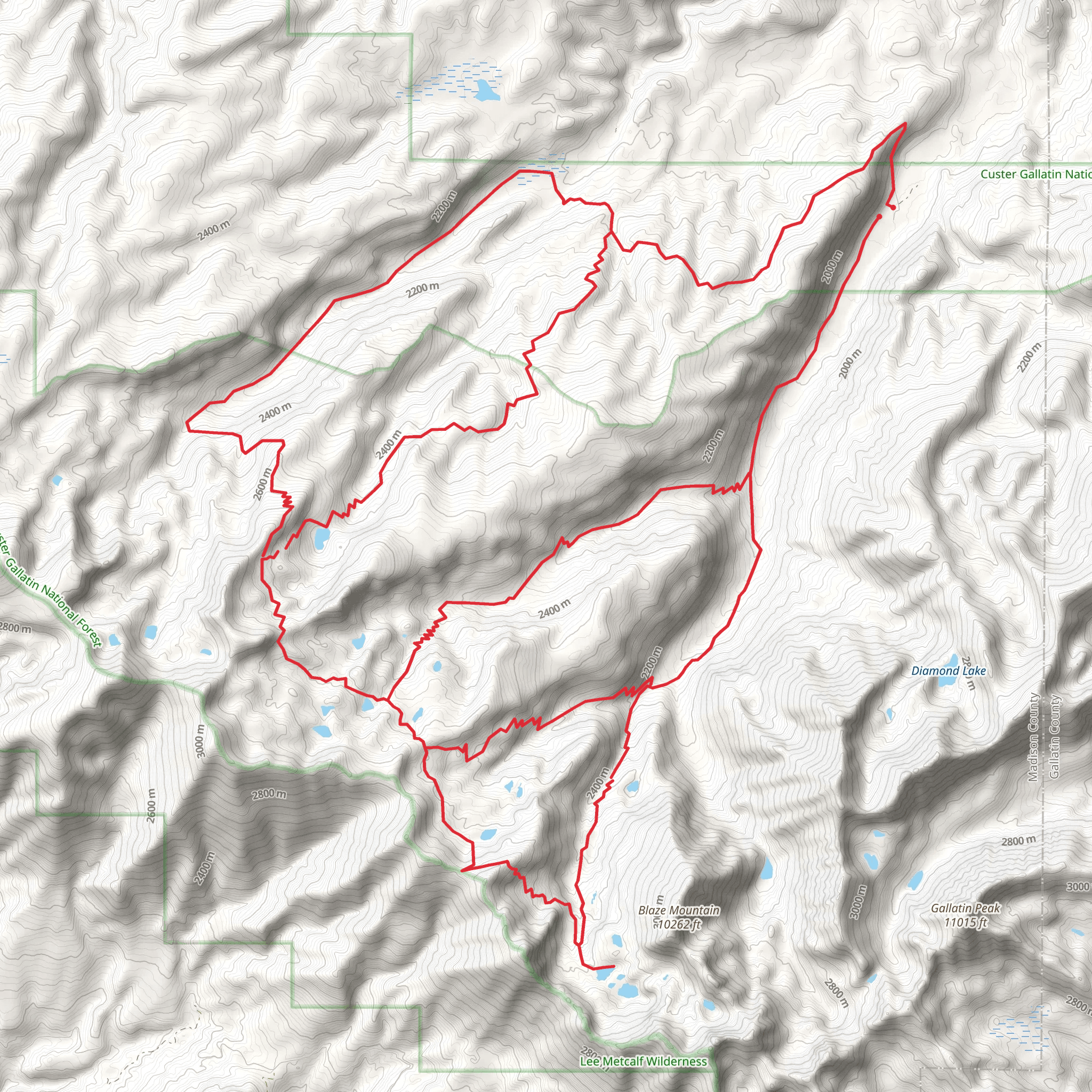Download
Preview
Add to list
More
33.9 km
~3 days
1615 m
Multi-Day
“Embark on the Spanish Peaks Loop for a breathtaking, challenging trek through Montana's wild, historical terrain.”
The Spanish Peaks Loop, nestled in the scenic Madison County, Montana, offers an adventurous trek through a landscape rich with geological wonders and diverse ecosystems. This challenging loop spans approximately 34 kilometers (about 21 miles) and features an elevation gain of roughly 1600 meters (around 5250 feet), presenting hikers with a strenuous journey through the heart of the Lee Metcalf Wilderness.
Getting to the Trailhead
To reach the trailhead, hikers can drive to the Spanish Creek Trailhead, which is the most common starting point for the Spanish Peaks Loop. The trailhead is accessible by car via Spanish Creek Road, off of US Highway 191. For those relying on public transportation, options are limited, and it's generally recommended to rent a car or arrange a shuttle from nearby towns such as Bozeman or Big Sky.
Navigating the Trail
Once on the trail, hikers will embark on a journey that takes them through dense forests, alpine meadows, and past high mountain lakes. The loop can be tackled in either direction, but many choose to go clockwise to gradually acclimate to the higher elevations. Hikers should be prepared with a reliable navigation tool such as HiiKER to track their progress and ensure they stay on the correct path.
Landmarks and Natural Features
The Spanish Peaks are known for their unique geological formations, including exposed igneous rocks that tell a story of the area's volcanic past. As you ascend, you'll encounter the iconic Beehive Basin, a glacial cirque that offers stunning views of the surrounding peaks and wildflower-filled meadows during the summer months.
Approximately halfway through the hike, you'll reach the high point at a saddle between the two Spanish Peaks, offering panoramic vistas of the Madison Range. Here, the elevation gain is most pronounced, and the terrain can be challenging, with rocky paths and potential snowfields, even in the summer.
Wildlife and Flora
The area is home to a variety of wildlife, including elk, mountain goats, and black bears. Hikers should be bear-aware, carrying bear spray and knowing how to store food properly. The trail also winds through areas of lodgepole pine and spruce-fir forests, with opportunities to spot rare wildflowers and plants unique to this high-altitude environment.
Historical Significance
The Spanish Peaks are steeped in history, with the name itself a nod to early Spanish explorers. Native American tribes, such as the Crow and the Blackfeet, also have historical ties to the region, having used the area's abundant resources for centuries.
Preparation and Safety
Given the trail's difficulty rating and remote nature, hikers should be well-prepared with adequate supplies, including water, food, and layers for changing weather conditions. It's also wise to inform someone of your hiking plans and expected return time due to the limited cell service in the area.
Seasonal Considerations
The best time to hike the Spanish Peaks Loop is from July to September when the snow has mostly melted, and the trail is more accessible. However, weather in the mountains can be unpredictable, and hikers should be prepared for sudden changes, including afternoon thunderstorms in the summer and early snowfall in the fall.
By respecting the natural environment and being prepared for the challenges of the Spanish Peaks Loop, hikers can enjoy a memorable experience in one of Montana's most breathtaking landscapes.
What to expect?
Activity types
Comments and Reviews
User comments, reviews and discussions about the Spanish Peaks Loop, Montana.
4.5
average rating out of 5
16 rating(s)

